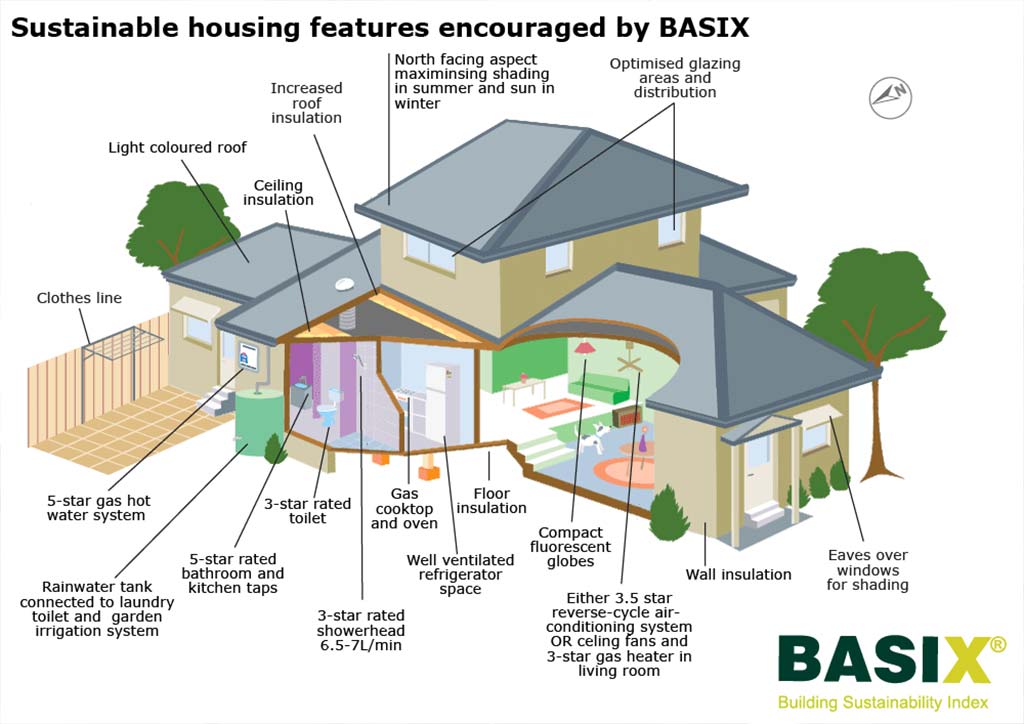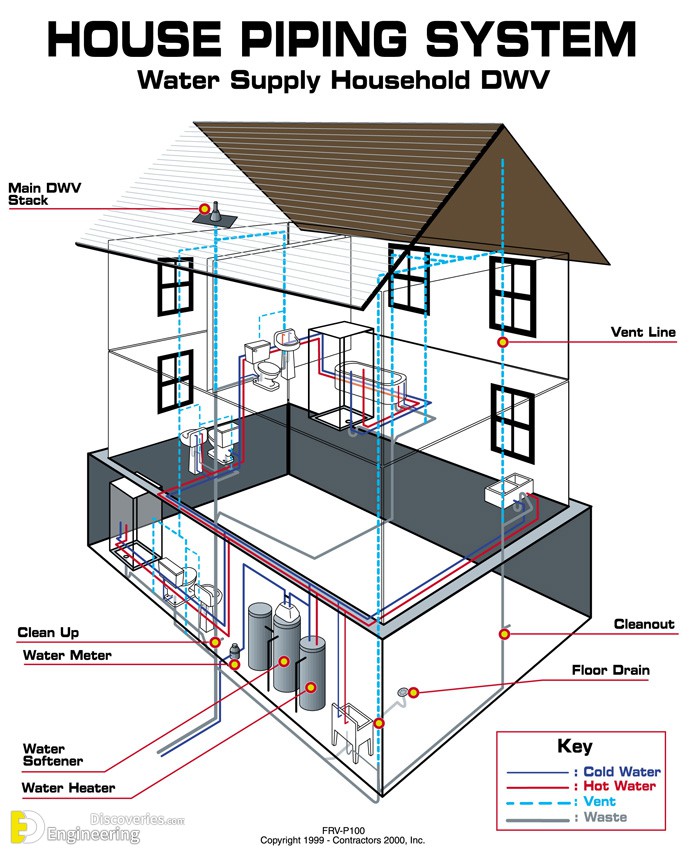Exploring Your Home's Plumbing System Anatomy
Exploring Your Home's Plumbing System Anatomy
Blog Article
On this page underneath yow will discover additional reliable information when it comes to Exploring Your Homes Plumbing Anatomy.

Recognizing exactly how your home's pipes system functions is vital for every single home owner. From delivering clean water for drinking, food preparation, and showering to securely getting rid of wastewater, a well-maintained plumbing system is critical for your family's health and comfort. In this comprehensive overview, we'll discover the complex network that composes your home's plumbing and offer ideas on upkeep, upgrades, and handling common problems.
Intro
Your home's plumbing system is more than just a network of pipes; it's a complicated system that ensures you have access to clean water and effective wastewater elimination. Recognizing its parts and just how they interact can aid you protect against pricey fixings and make sure whatever runs smoothly.
Standard Elements of a Pipes System
Pipelines and Tubes
At the heart of your plumbing system are the pipes and tubing that carry water throughout your home. These can be constructed from numerous products such as copper, PVC, or PEX, each with its benefits in terms of sturdiness and cost-effectiveness.
Fixtures: Sinks, Toilets, Showers, etc.
Components like sinks, commodes, showers, and bath tubs are where water is utilized in your home. Understanding how these components attach to the pipes system helps in diagnosing issues and preparing upgrades.
Valves and Shut-off Points
Valves control the circulation of water in your pipes system. Shut-off shutoffs are vital throughout emergency situations or when you require to make repair services, enabling you to isolate parts of the system without interrupting water flow to the entire house.
Water System
Key Water Line
The primary water line connects your home to the metropolitan supply of water or a private well. It's where water enters your home and is dispersed to different fixtures.
Water Meter and Pressure Regulatory Authority
The water meter procedures your water usage, while a stress regulatory authority guarantees that water moves at a risk-free pressure throughout your home's pipes system, stopping damage to pipelines and fixtures.
Cold Water vs. Hot Water Lines
Comprehending the distinction in between cold water lines, which supply water straight from the primary, and warm water lines, which lug heated water from the hot water heater, assists in fixing and planning for upgrades.
Drain System
Drain Pipes Pipes and Traps
Drain pipelines lug wastewater away from sinks, showers, and commodes to the sewage system or sewage-disposal tank. Traps prevent sewage system gases from entering your home and also catch debris that might cause blockages.
Ventilation Pipelines
Ventilation pipelines enable air into the drain system, preventing suction that might reduce drain and create traps to vacant. Proper air flow is essential for preserving the honesty of your plumbing system.
Relevance of Proper Water Drainage
Ensuring appropriate water drainage avoids backups and water damages. On a regular basis cleaning drains and keeping traps can stop pricey repairs and prolong the life of your pipes system.
Water Heating System
Kinds Of Hot Water Heater
Water heaters can be tankless or standard tank-style. Tankless heating systems warmth water as needed, while tanks save heated water for instant use.
Upgrading Your Pipes System
Reasons for Updating
Updating to water-efficient components or replacing old pipes can enhance water top quality, reduce water expenses, and boost the worth of your home.
Modern Pipes Technologies and Their Benefits
Check out innovations like clever leakage detectors, water-saving bathrooms, and energy-efficient hot water heater that can conserve cash and minimize ecological impact.
Cost Considerations and ROI
Determine the ahead of time prices versus long-term savings when thinking about pipes upgrades. Several upgrades pay for themselves with lowered utility bills and less fixings.
How Water Heaters Connect to the Plumbing System
Comprehending how water heaters connect to both the cold water supply and hot water distribution lines assists in identifying concerns like insufficient hot water or leaks.
Maintenance Tips for Water Heaters
Frequently flushing your water heater to eliminate sediment, inspecting the temperature settings, and examining for leaks can extend its lifespan and boost power performance.
Typical Pipes Problems
Leaks and Their Causes
Leakages can happen because of aging pipes, loose installations, or high water pressure. Attending to leakages quickly stops water damages and mold and mildew development.
Obstructions and Clogs
Blockages in drains pipes and bathrooms are commonly brought on by purging non-flushable products or an accumulation of oil and hair. Making use of drainpipe screens and bearing in mind what decreases your drains can prevent blockages.
Indications of Plumbing Issues to Expect
Low tide pressure, slow drains pipes, foul odors, or uncommonly high water expenses are signs of possible pipes issues that should be resolved without delay.
Plumbing Maintenance Tips
Normal Assessments and Checks
Schedule yearly plumbing inspections to capture problems early. Search for indicators of leakages, corrosion, or mineral build-up in taps and showerheads.
DIY Upkeep Tasks
Simple tasks like cleansing tap aerators, checking for toilet leaks making use of color tablet computers, or shielding subjected pipes in cool climates can protect against significant plumbing concerns.
When to Call an Expert Plumbing Professional
Know when a plumbing issue needs professional experience. Attempting intricate repair services without proper knowledge can bring about more damages and higher fixing costs.
Tips for Minimizing Water Usage
Basic habits like dealing with leaks without delay, taking shorter showers, and running complete loads of washing and recipes can save water and reduced your utility bills.
Eco-Friendly Pipes Options
Think about lasting pipes materials like bamboo for floor covering, which is durable and environmentally friendly, or recycled glass for kitchen counters.
Emergency Readiness
Steps to Take Throughout a Plumbing Emergency
Know where your shut-off shutoffs are located and exactly how to switch off the water system in case of a ruptured pipe or significant leakage.
Significance of Having Emergency Situation Contacts Helpful
Maintain contact info for regional plumbing professionals or emergency solutions easily offered for quick feedback throughout a plumbing crisis.
Environmental Impact and Preservation
Water-Saving Fixtures and Appliances
Setting up low-flow taps, showerheads, and toilets can considerably minimize water use without sacrificing performance.
Do It Yourself Emergency Fixes (When Appropriate).
Momentary solutions like utilizing air duct tape to patch a dripping pipe or putting a container under a leaking tap can lessen damages until an expert plumbing professional gets here.
Verdict.
Recognizing the anatomy of your home's plumbing system encourages you to maintain it efficiently, saving time and money on repair work. By complying with normal upkeep routines and staying informed about modern pipes innovations, you can guarantee your plumbing system runs effectively for many years to find.
HOW YOUR PLUMBING SYSTEM WORKS
Which Pipes Do What?
Blue lines = fresh water supply entering the building Red lines = hot water supply entering the building Grey lines = pipes carrying waste away from the building and venting pipes carrying gases away from the building (through the roof) YOUR MAIN PLUMBING SYSTEMS
There are two main plumbing systems that support your home s basic plumbing needs one that brings clean water into your home, and one that sends dirty water away from your home. Connected to the toilet, bath, shower, and other faucets in your home, these two systems keep your water flowing in the right directions.
ACCESSING FRESH WATER
Fresh and clean water is brought into your home through the main water supply line . Filtered through one pipe, this water is pressured to flow into the various fixtures in your home at any given time.
This water can be sourced from a well located on your property, a pond or river (mostly cottages), or, as in most cases, from the city s municipal water treatment centre. However, it is important to note that water that is untreated, such as the water siphoned from ponds or rivers, may not be safe to drink. Personal water supplies always need to be treated for hardness and contaminants before consumed.
MUNICIPAL WATER SUPPLIES
Improve taste and odour Remove sediment Eliminate hardness Reduce chlorine COLD WATER SUPPLY VS. HOT WATER SUPPLY
Cold water flows into your home or building through the service line, which then distributes hot or cold water to your fixtures. This line is most commonly run through a central column that runs floor to floor. Hot water runs in short and straight pipes as the longer the pipeline, the more heat that will be lost in the transfer. Having shorter pipes also allows residents to access hot water more quickly.
WASTE WATER SYSTEM
Your wastewater system is divided into two parts pipes that send wastewater away from your home and venting pipes that send sewer gas away from your home. Sewage water travels through pipes that flush the water and waste towards local sewers that are operated and managed by your city or town. Most sewer systems rely on gravity to move the wastewater to where it needs to go.
The further away from your toilet or sink, the larger wastewater pipes become. This allows for waste to be disposed of from various parts of your home or business at once without pipe blockages. The angle and flow of these pipes are also essential for keeping your waste pipes clear of build up.
https://harrisplumbing.ca/how-your-home-plumbing-system-works/

Hopefully you enjoyed our post about Plumbing Installation 101: All You Need to Know. Thank you so much for taking the time to read our posting. Those who liked our page please remember to pass it around. We treasure reading our article about Exploring Your Homes Plumbing Anatomy.
Get An Estimate Report this page